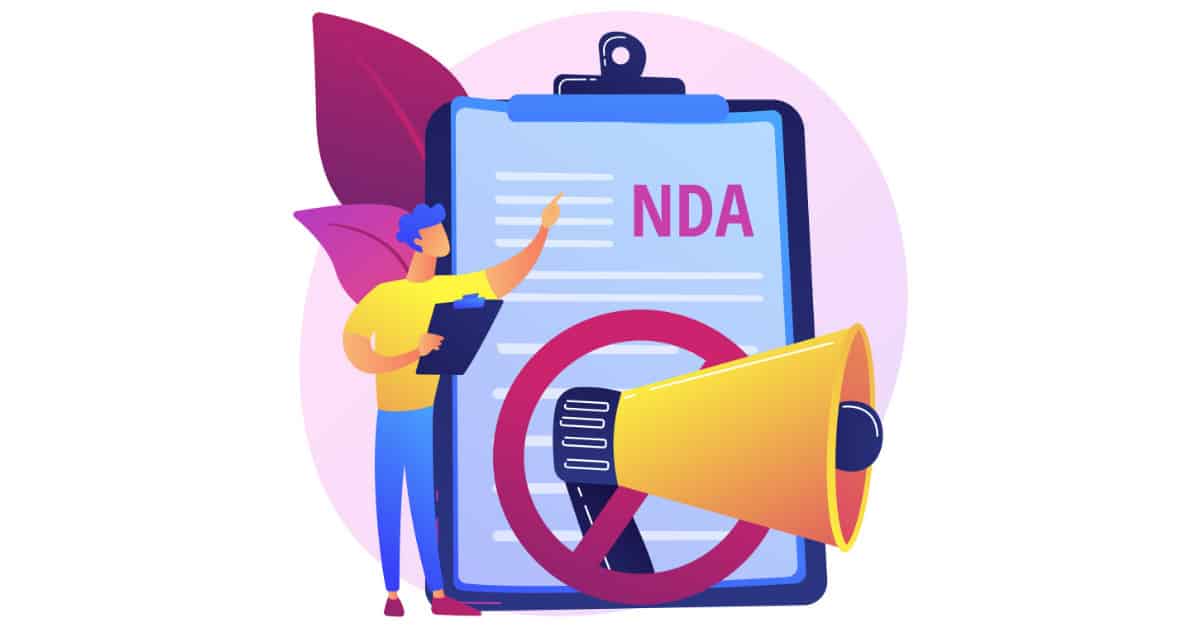A non-disclosure agreement is a formal agreement or a secret agreement contract between at least two parties. This may include confidential material, information, or knowledge that the parties want to share but wish restricted access for certain reasons or purposes.
Confidential Disclosure Agreement (CDA) or Proprietary Information Agreement (PIA) are the two most commonly used terms for a Non-disclosure agreement (NDA)
Examples of NDA:
Some of the Examples of non-disclosure agreements are as follow:
- Doctor-Patient Confidentiality
- Priest–Penitent Privilege
- Attorney-Client Privilege
- Bank–Client Confidentiality etc.
Non-disclosure agreement creates a relationship between both parties to protect the information or a secret.
Understanding the Non-Disclosure Agreement:
Typically, an NDA is based on having confidential writings that are signed by both parties and creates trust between them. Some NDA’s are specific to a defined time period. Others bind the signers for an infinite period of time so at no point any of the parties disclose the information that needs to be confidential or secret.
Some companies also require new employees to sign an NDA before giving them access to sensitive information about their company.
What is Included in the Non-Disclosure Agreement:
The factors can be changed or customized according to the nature of an NDA but here are six essentials that must be included in NDA:
- Names of parties signing the agreement
- Definition of confidential information of an NDA
- Excluded information from confidentiality
- A statement of appropriate uses of that information
- Time period
- Miscellaneous agreements
Breach or Violation of NDA:
The penalty for breaking or violating NDA is enumerated in agreement and it possible may include criminal charges. If a non-disclosure agreement is breached by any party, the other party may seek court action to prevent any further damages or disclosures.
An NDA is a legal binding agreement and its violation may lead to legal actions and penalties.
When to Uses Non-Disclosure Agreement:
Following are some of the situations that require the use of an NDA:
- Licensing of a technology or products
- Giving access to any sensitive information to an employee
- Presenting a business deal or offer to your potential investor or partner
- Using the services of an organization that has access to sensitive information.
- Hiring a freelancer for a specific job or task which involves sensitive information
- To ensure and protect intellectual property
- Sale, Merger, Investment, and Possessions of a business or an organization
- Additional safety and security measures
- Manufacturing agreements
Types of Non-Disclosure Agreements:
NDA is classified into the following three major types:
- Unilateral NDA
- Bilateral NDA
- Multilateral NDA
1. Unilateral NDA:
A unilateral non-disclosure agreement is usually referred to as a one-way NDA. This involves two parties but only one of them can disclose the information to the other party. The disclosing party expects that the non-disclosing party will maintain the secrecy of that information for some reason e.g., trade secrets or press releases or just essentially guaranteeing that an accepting party doesn’t utilize or unveil data without remunerating the revealing party.
2. Bilateral NDA:
The bilateral non-disclosure agreement is usually a two-way NDA or mutual NDA. This involves two parties and both parties disclose information in this case or type of NDA. Both parties need to take care of the data or information by keeping it secret. This sort of NDA is used when organizations are thinking about some sort of joint endeavor or merger.
When a Unilateral NDA is presented, some parties may demand a Bilateral NDA, because they envision that just one of the parties will uncover data under the NDA. This approach is used to make arrangements in the NDA fairer and more balanced for both parties.
3. Multilateral NDA:
Multilateral non-disclosure agreement involves three or more parties agreement but only one of them discloses the information and expect the other two parties to protect that information from further disclosure. This sort of NDA removes the requirement for independent unilateral or bilateral NDAs between just two parties. An NDA can be favorable and beneficial because the parties include reviews, execution, and implementations of information only in one agreement. However, this preferred approach can become more unpredictable to deal with that it might be needed for the parties involved to be consistent for a long time period agreement on a multilateral arrangement.
Advantages of Non-Disclosure Agreement:
Following are some advantages of a Non-Disclosure Agreement:
- Since NDA is a legal document, any party going against the agreement would be lawfully responsible for all the damages.
- Secrecy can be maintained.
- Trust can be built between two parties
- Works as a Safeguard for an individual or an organization.
Conclusion
Numerous organizations regularly utilize non-disclosure agreements today to keep their proprietary information or trade secrets from being disclosed and to keep matters confidential. Anybody considering utilizing an NDA ought to think about the basic issues, for example; what information should be ensured protection and for how long before signing the agreement.
See Also
What is conflict of interest?
How to start a franchise?









